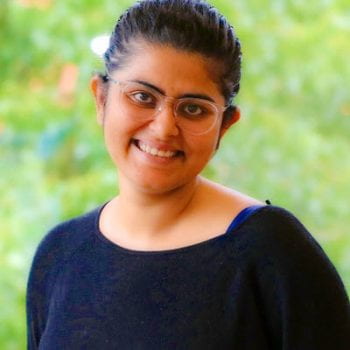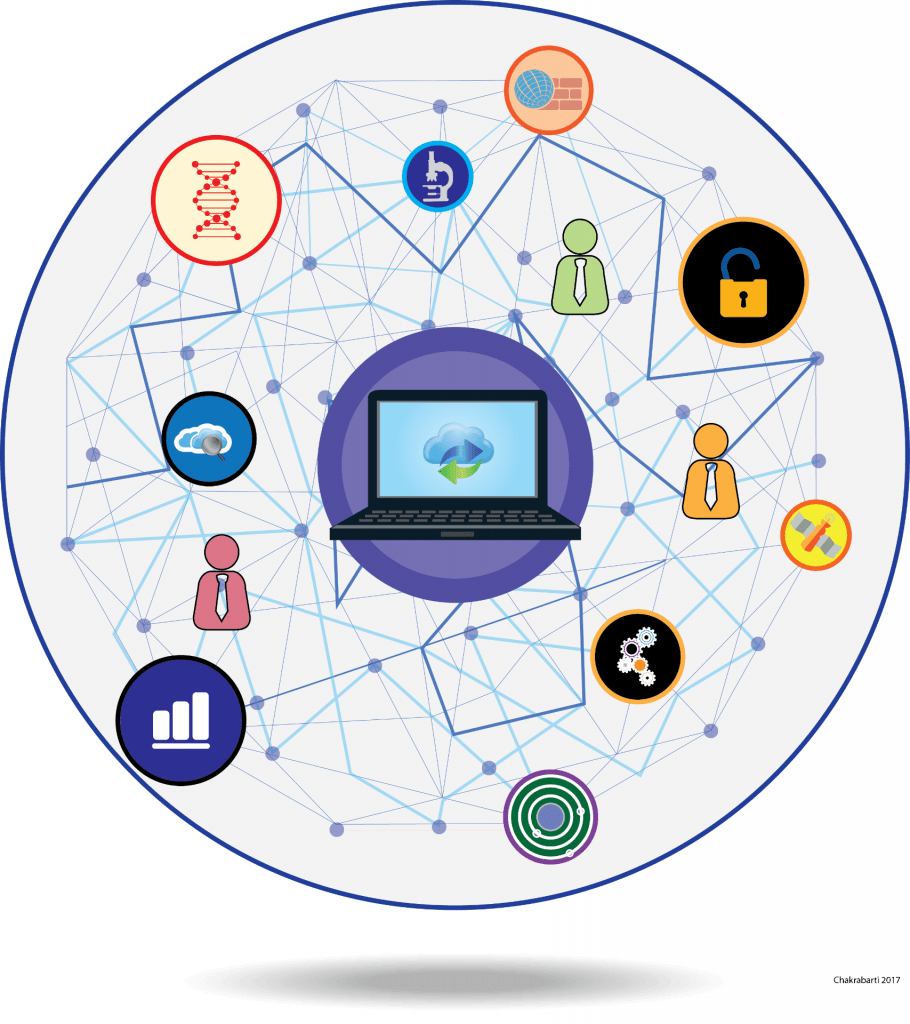As the number of advanced degrees earned in the sciences increases, more graduates are turning to alternative careers such as science policy, outreach, and science communication. Science communication can take many forms, including writing and editing for newspapers, magazines, press offices, and scientific journals.
For those interested in a career in scientific publishing, Dr. Rituparna Chakrabarti, a scientific editor at iScience, the interdisciplinary journal from Cell Press, offered some advice and insight on her unique journey of becoming a scientific editor.

Rituparna began her academic training by obtaining a Bachelor’s degree in biotechnology from the VIT University, India, which is known for offering excellent engineering education. She always dreamt about working at the intersection of biology and engineering. Therefore, she decided to pursue her Master’s degree at two institutes: her alma mater and the Tata Institute of Fundamental Research, India, an institute dedicated to mathematics and science research.
During this time, she fell in love with neuroscience, microscopy, and method development. Wanting to put her training to test, she finally decided to do pursue a Ph.D. in neuroscience and subsequently a postdoctoral fellowship at the interface of neuroscience and structural biology at the University of Göttingen, Germany.
It was during these years that she truly appreciated the value of collaboration and communicating science. “I loved the fact that, when I was writing my thesis, I could read papers from different backgrounds and look at my project from very different angles,” Rituparna said.
However, she was also challenged to bring many different fields together to propel her research forward. “I realized that scientists from different backgrounds speak different scientific languages,” Rituparna said. “What a physicist finds novel and exciting might not hold true for a biochemist and visa versa. It is a very big challenge to find a middle ground.”
Her interdiscipinary background enabled Rituparna to confront challenges and prepared her for excelling in scientific communication.
Rituparna explained, “What happens in these situations is that when you are challenged with diverse scientific collaborations, you have to be very good at documenting and communicating your message in a way to reach collaborators.”
After many years of interdisciplinary academic research, Rituparna wanted to test her skills in scientific communication. She realized editorial could be an ideal route to break into the field.
“I never said no to any opportunity that came my way, and I adapted to changes,” Rituparna said.
She joined STEMPeers, a career support group, during her postdoctoral fellowship to start developing her editorial skills. There, she began blogging with Club SciWri, an outreach-focused blog run by scientists who work to deliver engaging scientific stories with the goal of educating the public.
At Club SciWri, Rituparna co-founded the STEMPeers Weekly Digest, a weekly newsletter published by Club SciWri. Here, she managed a team, wrote career- and outreach-focused articles, and curated the most important scientific findings of each week in the newsletter. Her ability to manage scientific content and a team as well as her ability to run a timely pipeline prepared her for the role of Editor-in-Chief at Club SciWri. During her tenure, Club SciWri achieved more than 66,000 viewers and visitors from 140 countries in a short span of nine months.
At Club SciWri, Rituparna honed the three most important skills needed by a scientific editor: time management, quick decision-making, and global teamwork. These skills and others were tested during the interview process at many scientific journals when she was asked to evaluate manuscripts for their scientific merit under strict time constraints.
“To become a scientific editor, you need to be in a position to take a very fast position on content, which might not fall into your domain of expertise,” Rituparna said. “You should have a broad concept of science and look at things from a bird’s eye view.”
When asked about her daily routine as an editor she said, “We wear several hats, and our tasks might vary depending on the journal. However, a general day includes assessing and commissioning manuscripts, managing peer-review, and participating in outreach and cross-journal initiatives.” She added, “Usually, experienced editors spend 10-30 minutes per manuscript, which might appear a bit stressful, but after 6-12 months of training, an editor can pin down the main message of the paper and assess how well supported the claims are presented in the paper.”
Now at iScience based in Amersterdam, Netherlands, Rituparna is extremely happy with her position, but it is clear that she did not reach this level without preparation and hard work.
“I am still learning from other experienced editors on the team,” Rituparna said. “I love this job; every day I read something new and most of the time completely out of my comfort zone. But what excites me is that I work with a bunch of really enthusiastic scientists at heart. So to become an excellent scientific editor, you need to be an excellent scientist yourself.”
She emphasizes that there are many routes to get involved in science communication and editing. But, to ensure you have the skills to do so, she suggests collaborating heavily and seeking feedback from individuals in fields outside of your own. These experiences will help broaden your understanding of the breadth of science as well as give you a repertoire of reviewers and resources in the future.
“I think collaboration is essential because this is not just important for your science but also, on a personal scale, because it helps you to not feel alone,” Rituparna said.
When asked about work-life balance, she explained, “I think it’s important to maintain an equilibrium. When I joined this team, I was so pleased that everyone in the team resonates with this value. We have everything from scuba divers to musicians. I make time to practice swimming as often as I can. Also, in a city like Amsterdam, the cultural offering is huge; so as soon as I moved to Amsterdam, I started to play the Sitar again in Philaharmony.”
Overall, she finds the science communication field very fulfilling and enjoys the dynamic nature of the job.
“We are all growing and learning together,” Rituparna said. “It is really very rewarding for me at the end of the day, and I feel like I’m a part of something great.”
